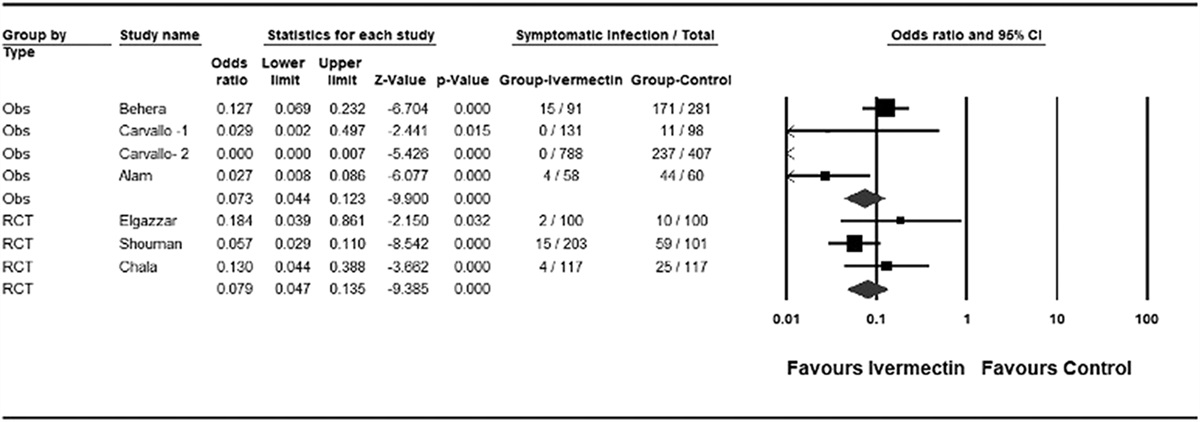I am glad if it is helpful to youVery, very interesting. Thank you @Nachtweide for your research which will definitely benefit others like me

I have seen a document that has not been translated into English, but should be considered in the context of many diseases. Therefore I have translated it here. The Power Point in German about the different medicinal plants is also worth reading.
TOPIC OF OTHER DISEASES (internal use)
You have the choice of using Artemisia in the high daily dose of 5 g or in the low daily dose of 1.25 g. We give the high dose for acute conditions, e.g. malaria, the low dose for chronic conditions, e.g. rheumatism.
Duration of therapy:
Depending on the disease ---High dose: 5 g of dried tea (or 25 g of fresh leaves) pour 1 liter of boiling water, infuse for at least 15 minutes, drink throughout the day. 5 g of dried and crushed artemisia leaves is equivalent to about 4 weakly heaped teaspoons. Or powder this amount and mix it into cream, yogurt, honey, etc., and take it throughout the day.---Low dose: pour 1.25 g of dried tea (or 6.5 g of fresh leaves) with at least 200 ml (1 large cup) of boiling water before breakfast, drink after breakfast. 1.25 g of dried and crushed artemisia leaves (as described) is equal to one weakly heaped teaspoon. Or powder and mix with banana or apple porridge, cream, yogurt or honey, etc. and take with breakfast.
For support of AIDS patients:see www.anamed-edition.com
To support cancer patients:see www.anamed-edition.com
Hemorrhoids:
This is the oldest use of Artemisia annua in Chinese medicine: drink Artemisia tea (low dosage) occasionally, additionally apply Artemisia ointment (recipe in our brochure order no 202).
Colds, fever:
In Europe, drink plenty of tea made from peppermint, sage, lime blossom..........and in the tropics tea made from lemongrass, adults 3 liters each per day. Only if this is not successful, drink instead 1 liter of artemisia tea (high dosage) plus 2 liters of peppermint or lemongrass tea per day, for 7-12 days
Intestinal disorders: Ulcerative colitis, Crohn's disease, diverticulitis; also various rheumatic diseases:
Take high dosage of A-3 for at least 14days. If there is no improvement, neither clinically nor subjectively, stop this therapy. If there is an improvement, continue to take high dosage for acute problems, then low dosage for chronic problems, until the symptoms disappear. The mode of action may be that Artemisia both increases immunity and has mild antibiotic and anti-inflammatory effects. In several cases, cortisone could then be avoided!
Schistosomiasis:
Artemisinin decreases the number of bilharzia pathogens. Try an artemisia tea cure (high dosage) for 2-3 weeks. Possibly combine with usual therapy. Have therapy successes/failures checked in the laboratory and let us know, thank you! -
Lyme disease:
We are of course pleased that more and more doctors are becoming aware of us, without us having to do any advertising. For example the book: "Die chronisch persistierende Borreliose", by Dr. Petra Hopf-Seidel, free download on the internet. Tip: In the Google search words: "Hopf Seidel anamed", more info from other doctors you get if you google: "Lyme disease Artemisia annua".Accordingly, it seems to be useful to give antibiotics (minocycline or tetracycline in the usual dosage)TOGETHER with A-3 tea immediately after an infection,because A-3 open the cell so that the antibiotic can reach the Borrelia hidden in the cell. It may also be useful to take artemisia tea for several weeks after antibiotic therapy.Suggestion:---3 weeks of antibiotics plus A-3 (if possible 1g per 10 kilo body weight per day, as powder or tea)---if it got better: 3 weeks of only A-3 in this dosage----then 3 weeks of A-3 in low dosage (0.25g per 10 kilo bw per day, as powder or tea)Note: There are so many and different borrelia. ..only in this way we can explain why in some cases this therapy works wonders and sometimes is just unsuccessful..., so:try!
Bronchitis:
Artemisia leaves put on boiling water, inhale the resulting steam. If you have a sore throat, gargle with artemisia tea.
Dengue:
Take artemisia tea or powder as described under malaria, 5g/day in the acute phase , usually for 14 days.
Chikungunya:
Take artemisia tea or powder as described under malaria, 5g/day in the acute phase , usually for 14 days, then 1.25g/day for several weeks until pain disappears.
Lupus:
Patients take tea of 5 g Artemisia per day (or take the powder) for 6 weeks, if there is no improvement, the treatment is stopped, otherwise continued with 5 g a day in the acute phase and later with 1.25 g a day in the chronic phase.WHO published a monograph on Artemisia annua in March 2007. There it is recommended to take ground Artemisia annua in case of lupus erythematosus (severe skin redness, auto-aggression disease).
Withdrawal cures(drugs, alcohol, cigarettes...):
Patients take tea of 5 g Artemisia per day (or take the powder) during the withdrawal phase for 3 weeks, then tea of 1.25 g Artemisia per day for three weeks. Explanation: Artemisia ingredients apparently occupy some drug receptors so that drug withdrawal is facilitated. Nicotine addicts who absolutely must continue smoking also smoke "roll-your-own" from A-3 leaves for a few days until the addiction disappears.
Candida:
(oral thrush) Chew fresh artemisia leaf several times a day. For children: powder artemisia leaves, mix with equal amount of honey; (alternative: finely grate fresh garlic and mix firmly with equal amount of honey); spread in mouth several times daily.
Diabetes type 1 and 2:
Possibly A-3 together with Moringa can work here, please google "Artemisia annua Diabetes" on the internet as I am not allowed to put links here. Suggestion: take 5g A-3 tea or powder plus 5g Moringa over the day for 6 weeks. Check success after 6 weeks. Please do blood glucose measurements all the time!
OTHER DISEASES:
Sporadically we have heard of amazing improvements, e.g. in toxoplasmosis,arthritis, fibro-myelosis, epilepsy....a huge field for research!Patients take tea of 5 g Artemisia per day for 6 weeks, if there is no improvement at all, the treatment is stopped, otherwise continue with 5 g a day in the acute phase and later with 1.25 g a day in the chronic phase
FURTHER DISEASES (external use)
Skin problems; athlete's foot, hemorrhoids, eczema:
often an application of Artemisia ointment, which is slightly antiseptic, helps. Preparation: mix 5g (for hemorrhoids 2.5 g) of powdered(!) Artemisia leaves with 100 g of vegetable oil (olive oil is best, otherwise peanut oil or sunflower oil is also suitable). Heat this mixture in a water bath. Once the water in the water bath boils, look at the clock and leave the mixture in this boiling water bath for one hour. Now filter through a cloth, and stir in 10 g of melted beeswax, now immediately pour into crucibles (such as clean photo jars). Keeps for one year. Always apply to wet skin and rub in. Good experience with eczema even in children, where the doctor only knew how to proceed with cortisone....
Eye infections in the tropics:
Many residents in the tropics go blind, (trachoma!) because they could not afford the expensive eye medications or the trip to the eye doctor, if they were swarmed by flies as a baby or child....Following two recipes are written only for emergencies, when sterile eye drops or sterile eye ointments are not available. Beware of eye infections in Europeans: Europeans are often allergic to mugwort pollen. Therefore, be sure that no flowers, only leaves, are used, and that no allergy is present!Recipe A: Boil 25 g fresh or 5 g dried artemisia leaves with a cup of water (200 ml) for 5
minutes, and then filter through a (coffee) paper filter. Put this tea and a clean cotton handkerchief in the boiling pot and boil it again for a short time, let it cool down a bit and now put the wet handkerchief on the eye for 5 minutes. Repeat several times a day. In addition, treat the eye with aloe gel.Recipe B: Mix 10 g of cleanly harvested, dried, powdered artemisia leaves (without flowers!) with 100 g of olive oil and 10 g of beeswax, pour into clean pot (no water bath), insert thermometer , stir constantly, keep the mixture at 95-100 degrees Celsius for 15 minutes, filter immediately through paper filter, pour into clean containers, (e.g., seal 5 g each into new polyethylene bags) use on a trial basis for eye infections. Work as sterile as possible in disaster areas!Put a small amount in the eye several times a day, treat additionally or alternatively with fresh aloe gel.
VETERINE MEDICINE :
For our big surprise, we received several reports about it: Artemisia leaves / branches can be placed in the stable in the rabbits / hatorkeeping, so that the animals can cure their bacterial intestinal infections (fatal coccideosis), depending on the request. The stems remaining after the harvest are treated by the hare. For other animals, the leaves can be offered small cuts or the Artemisia leaf powder is mixed into the feed, for a week. Proposal of a dosage for chickens, pigs, pigeons, etc. (as a substitute for harmful antibiotics): 10 g Artemisia leaf powder on 1 kg of finished food, cure for 5-10 days. There are also more and more reports for use as a Wurmwood (Artemisia = engl. "Wormwood")! Herbicide: Artemisia leaves work in agriculture as a natural herbicide, they reduce the healthy weeds Moths: Artemisia leaves have moth repellent. Fill dried leaves in fabric or paper bags, put bags between the clothes. Bitic tonic As a substitute for the commercial cola: make your own "bitter tonic"! For the production of a refreshing drink 1 teaspoon of dried artemisia leaves and the rubbed shell of 10 lemons boil in 500 ml of water for 3 minutes, allow to cool, filter, juice of 10 lemons and Add sugar at will, dilute with 4 liters water, serve ice cold.
What role does Moringa play?
Moringa oleifera leaf powder: The main use is a general immunostimulane. We themselves often use it in combination with Artemisia for long-term treatments (AIDS, cancer, borreliosis, etc.). AIDS patients in Africa face ourselves that on a therapy with Artemisia, always Moringa must be added. It will be described in scientific literature that Moringa inhibits the enzymatic degradation of medicines. This could then be called that a combination of Moringa with Artemisia causes Artemisia ingredients to stay longer in the bloodstream.
Last edited:



 . I'd then need to explain my ease dropping. He's a good guy and I hope he'll be ok.
. I'd then need to explain my ease dropping. He's a good guy and I hope he'll be ok.


